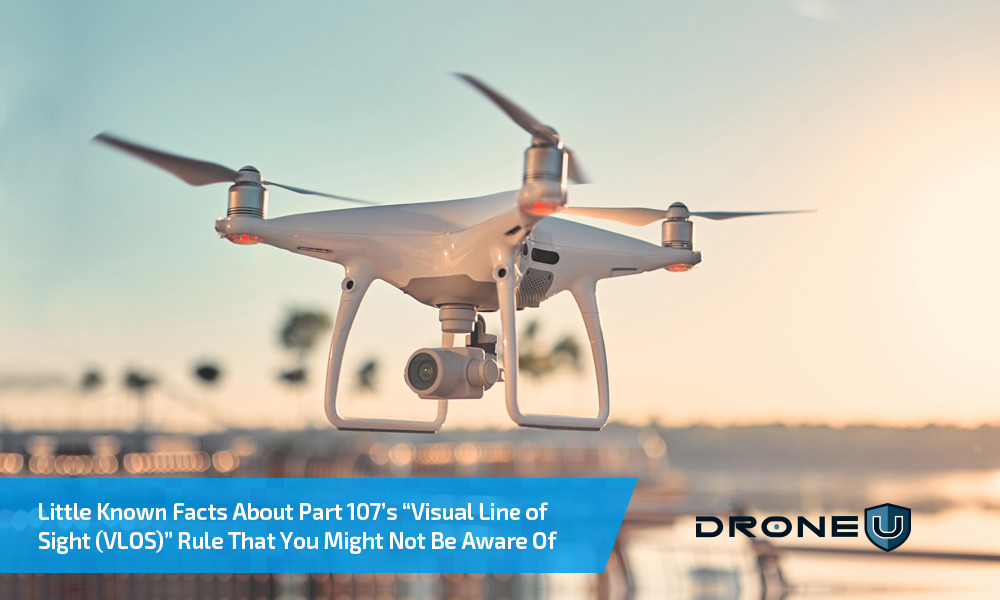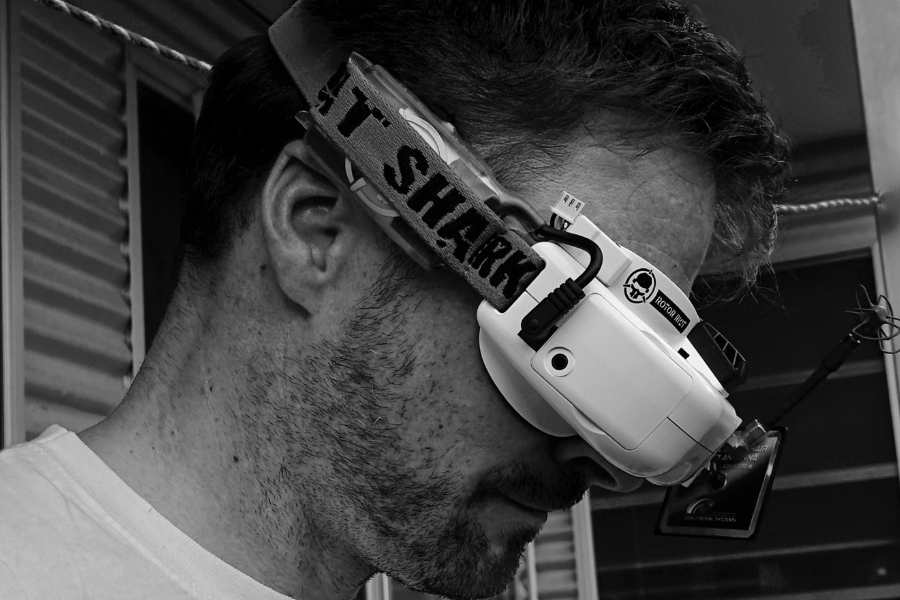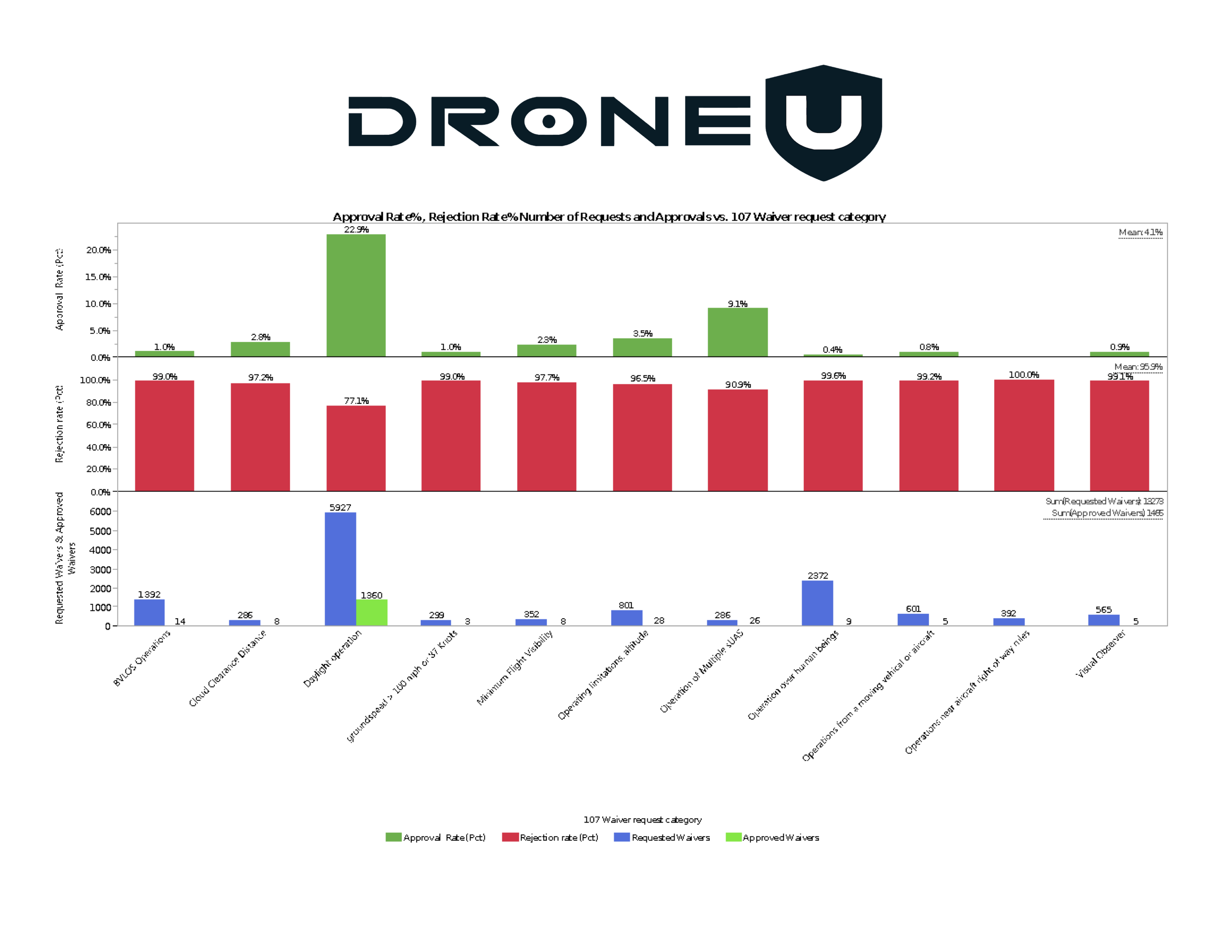
The absence of necessary infrastructure means that FAA has persisted with their line of sight (VLOS) rule. While we know that the FAA does not permit BVLOS operations, are there any exceptions to the rule? Is there a maximum distance beyond which you cannot fly? Can you use FPV technology to fly BVLOS?
In this blog post, I answer these and many more commonly asked questions. Let’s start by looking into what Part 107 says about the line of sight rule.
What Does Part 107 Say About Maintaining Visual Line of Sight (VLOS)?
Drone pilots often ask us if they can maintain visual contact by using binoculars in order to fly a drone farther away. Sadly, no. According to Section 107.31 –
(a) With vision that is unaided by any device other than corrective lenses, the remote pilot in command, the visual observer (if one is used), and the person manipulating the flight control of the small unmanned aircraft system must be able to see the unmanned aircraft throughout the entire flight in order to:
(1) Know the unmanned aircraft’s location;
(2) Determine the unmanned aircraft’s attitude, altitude, and direction of flight;
(3) Observe the airspace for other air traffic or hazards; and
(4) Determine that the unmanned aircraft does not endanger the life or property of another.
So, how far can you fly away? Is it 3 miles? 2 miles? The FAA has refused to specify a fixed maximum distance for VLOS operations – and understandably so. A drone pilot flying in misty conditions will have limited visibility compared to his peer who is flying on a clear day.
Can You Use FPV Technology to Comply with FAA’s Line of Sight (VLOS) Requirements?

Organizations such as The Drone User Group Network, AIA and University of California have argued that FPV technology should be allowed in order to maintain visual line of sight (VLOS). However this is not possible. FPV technology works by transmitting feed from the drone camera to the control station. In interference heavy areas, you have a high chance of losing your feed, and hence, line of sight. Moreover, because of limited and sometimes distorted field of view, relying on FPV technology to see and avoid other aircraft is not really advisable.
If I Use Multiple Visual Observers, Can I Fly My Drone Farther Away?
This is another question that drone pilots often ask. So, can you daisy chain visual observers, maintain communication via radios and fly BVLOS? While this seems logical – again this is not permissible by the FAA.
Some creative drone pilots also question if multiple remotes can be plugged into each other allowing the VO to take over from the pilot. However, this is not permissible too.
So, unfortunately, this means that you will to move your drone operations, roughly every 2,000 feet. This would be extremely time consuming and make drone operations cumbersome and non-profitable.
What Are Your Chances of Acquiring a Part 107 BVLOS Waiver?
You need a Part 107 waiver to fly beyond visual line of sight. But obtaining one is extremely difficult – to say the least. As of Q1 2018, out of 1392 requested BVLOS waivers, only 14 were approved – an approval rate of barely 1%. Apart from Night waivers, all Part 107 waivers have single digit approval rates.

In 2016, PrecisionHawk was granted the first ever BVLOS waiver by the FAA. This was possible only after three years of painstaking R & D. Click HERE to learn more about this. Apart from PrecisionHawk, BVLOS waivers have been granted to other industry heavyweights such as GE and State Farm Insurance. Clearly, given the current regulatory framework, only large organizations with limitless resources can fly BVLOS. But what about the little guy? Can we expect the FAA to make it easier for the average drone pilot to procure a BVLOS waiver?
Will the Latest UAS Policy Developments Make the Approval of BVLOS Waivers Easier?
Lack of infrastructure has resulted in rigid drone regulation that prevents us from drawing maximum benefit from drone technology. Think about this – the Mavic can fly a distance of 7 miles or 35,000 feet. With these kind of capabilities present on an entry level drone, the possibilities are endless if we are allowed to fly BVLOS. Adequate infrastructure and favorable regulation can make drone deliveries, mapping large tracts of lands or inspecting oil pipelines spread out over many hundreds of kilometres a reality.
Having said that, it is heartening to see that the FAA is going all out to come up with a cheap, yet effective system. The emergence of Remote ID’s for drones is a step in the right direction. Remote ID will give a boost to UTM or Universal Traffic Management. Apart from BVLOS operations, UTM will also allow for flight over people operations and autonomous operations – making it possible to acquire data and solve problems on a much larger scale.
Become a Drone U Member.
Follow our Medium Account for commentary on the latest happenings in the drone industry.
Do not forget to subscribe and Listen to Ask Drone U, the #1 drone podcast







Add Your Comment